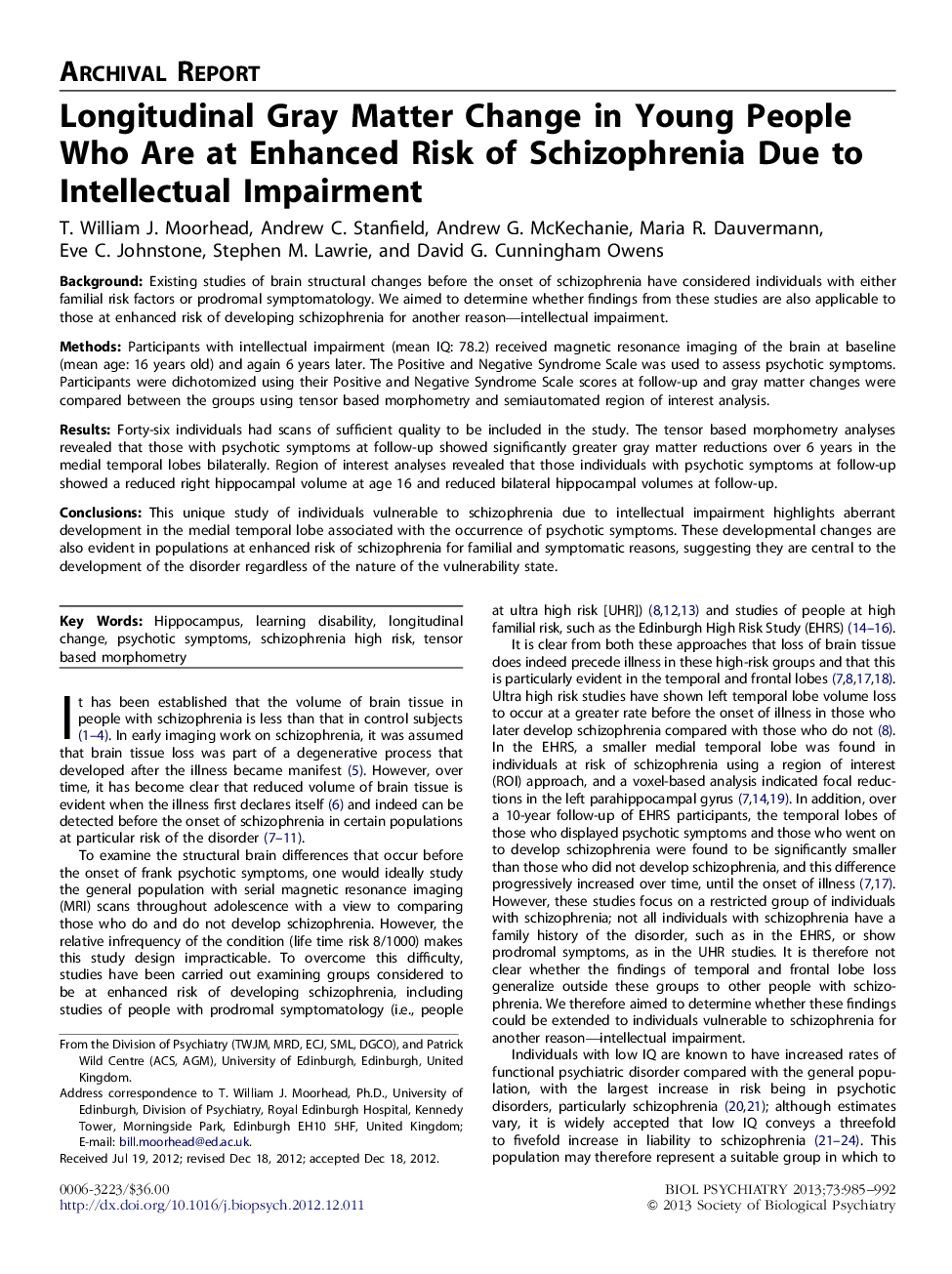| کد مقاله | کد نشریه | سال انتشار | مقاله انگلیسی | نسخه تمام متن |
|---|---|---|---|---|
| 4177782 | 1276451 | 2013 | 8 صفحه PDF | دانلود رایگان |

BackgroundExisting studies of brain structural changes before the onset of schizophrenia have considered individuals with either familial risk factors or prodromal symptomatology. We aimed to determine whether findings from these studies are also applicable to those at enhanced risk of developing schizophrenia for another reason—intellectual impairment.MethodsParticipants with intellectual impairment (mean IQ: 78.2) received magnetic resonance imaging of the brain at baseline (mean age: 16 years old) and again 6 years later. The Positive and Negative Syndrome Scale was used to assess psychotic symptoms. Participants were dichotomized using their Positive and Negative Syndrome Scale scores at follow-up and gray matter changes were compared between the groups using tensor based morphometry and semiautomated region of interest analysis.ResultsForty-six individuals had scans of sufficient quality to be included in the study. The tensor based morphometry analyses revealed that those with psychotic symptoms at follow-up showed significantly greater gray matter reductions over 6 years in the medial temporal lobes bilaterally. Region of interest analyses revealed that those individuals with psychotic symptoms at follow-up showed a reduced right hippocampal volume at age 16 and reduced bilateral hippocampal volumes at follow-up.ConclusionsThis unique study of individuals vulnerable to schizophrenia due to intellectual impairment highlights aberrant development in the medial temporal lobe associated with the occurrence of psychotic symptoms. These developmental changes are also evident in populations at enhanced risk of schizophrenia for familial and symptomatic reasons, suggesting they are central to the development of the disorder regardless of the nature of the vulnerability state.
Journal: Biological Psychiatry - Volume 73, Issue 10, 15 May 2013, Pages 985–992